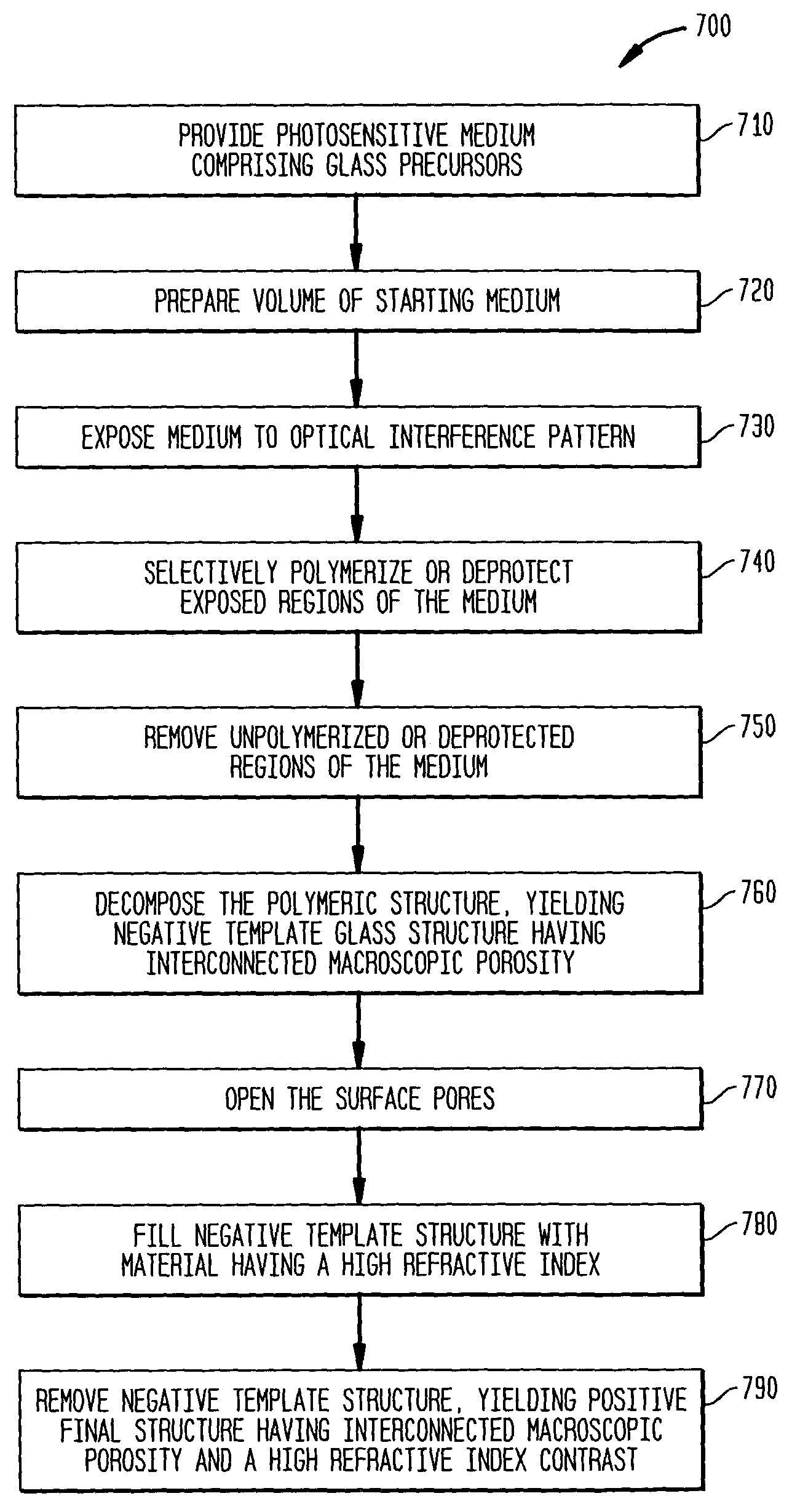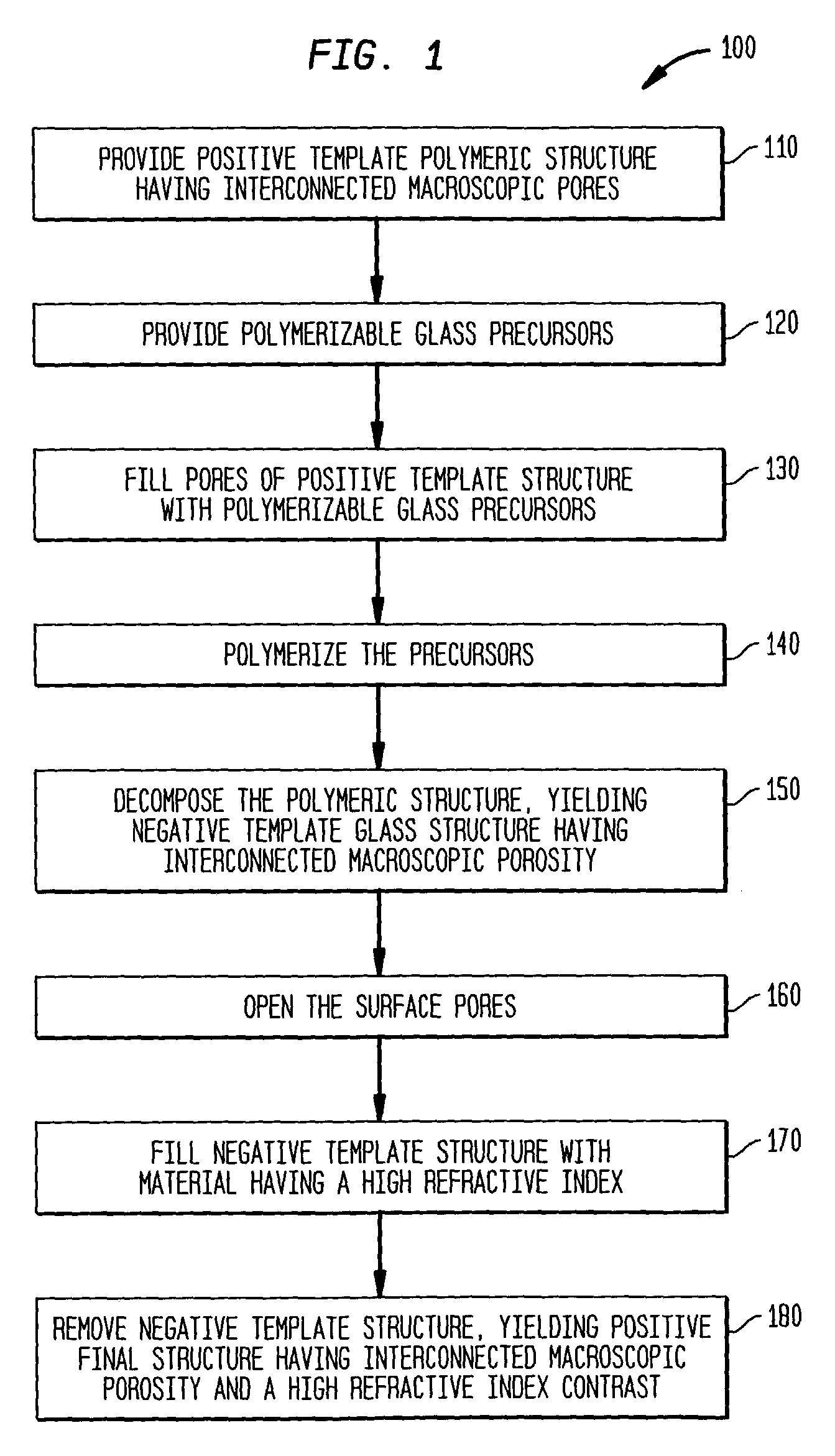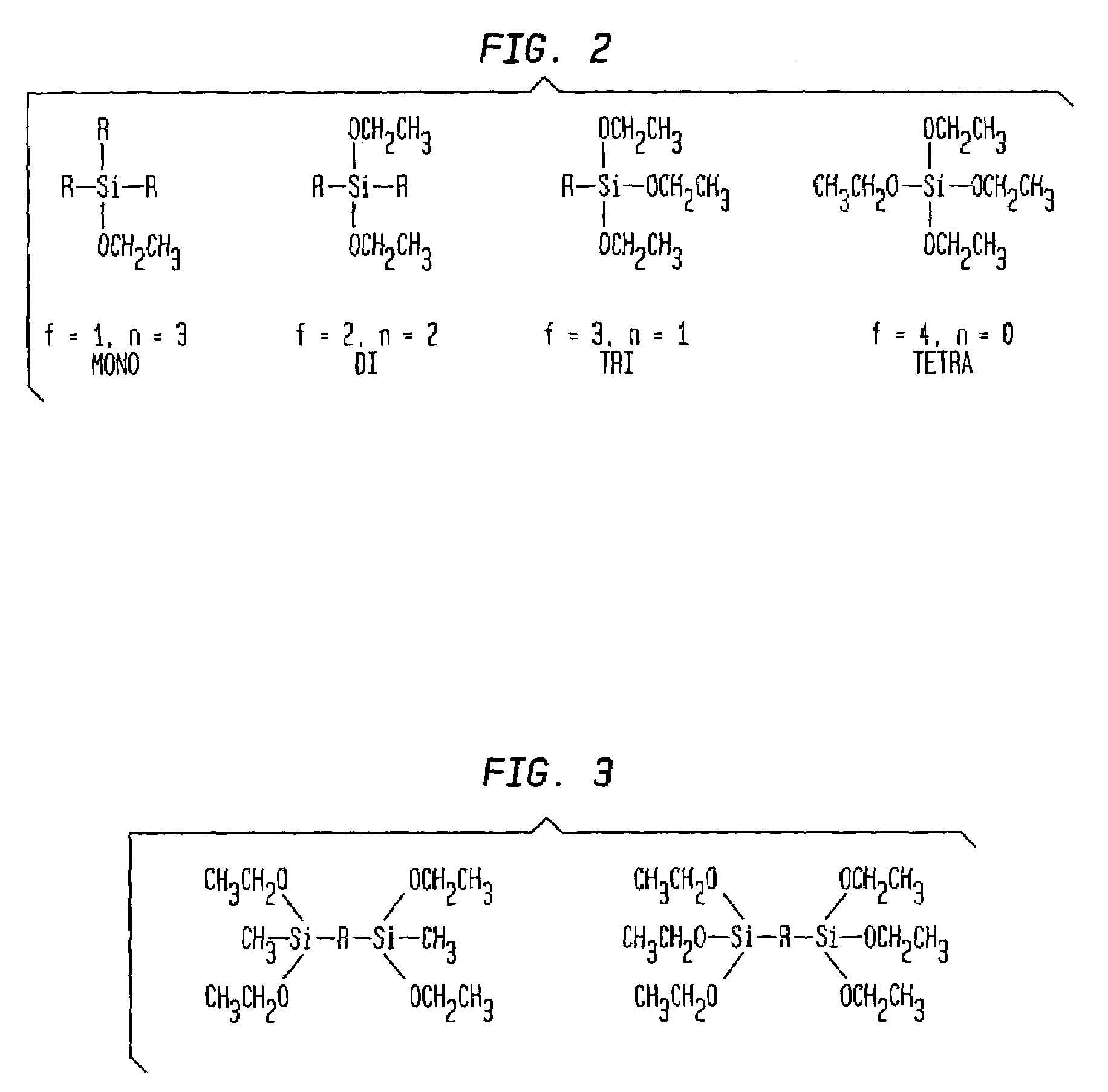Process for making crystalline structures having interconnected pores and high refractive index contrasts
- Summary
- Abstract
- Description
- Claims
- Application Information
AI Technical Summary
Benefits of technology
Problems solved by technology
Method used
Image
Examples
Embodiment Construction
[0034]The present invention provides methods of producing a negative template mold, having an interconnected macroscopic porous structure that can withstand the high temperatures necessary to fill the pores by CVD or other high temperature process, with a material having a high refractive index to create a positive final porous structure. The present discussion will principally address these product structures in the context of their utility as photonic band gap structures, but it will be understood that these structures have other end-use applications as well.
[0035]According to one embodiment, a negative template mold is prepared by filling an organic polymeric positive template mold having interconnected macroscopic pores, with a polymerizable precursor to the formation of SiO2 or other glass. After polymerization of the precursor, the positive template organic polymer mold is removed, and the precursor is converted to glass to constitute the desired negative template mold.
[0036]I...
PUM
| Property | Measurement | Unit |
|---|---|---|
| Temperature | aaaaa | aaaaa |
| Temperature | aaaaa | aaaaa |
| Fraction | aaaaa | aaaaa |
Abstract
Description
Claims
Application Information
 Login to View More
Login to View More - R&D
- Intellectual Property
- Life Sciences
- Materials
- Tech Scout
- Unparalleled Data Quality
- Higher Quality Content
- 60% Fewer Hallucinations
Browse by: Latest US Patents, China's latest patents, Technical Efficacy Thesaurus, Application Domain, Technology Topic, Popular Technical Reports.
© 2025 PatSnap. All rights reserved.Legal|Privacy policy|Modern Slavery Act Transparency Statement|Sitemap|About US| Contact US: help@patsnap.com



